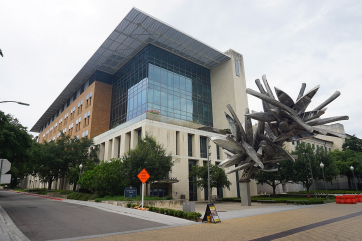Natural Land Bridges Help Grizzly And Black Bears Travel Between Montana And Canada, Increasing Genetic Diversity
By Staff ReporterThe nation's roads and highways are more than just a potential death trap for crossing animals, but a barrier for populations to maintain genetic diversity. On the border between Montana and Canada, 44 natural overpasses form the world's largest network of crossings. Specifically targeted to black bears and grizzly bears, they're helping ensure genetic diversity within the two species, according to a new study from the Western Transportation Institute (WTI) at Montana State University.
Other projects have studied the effectiveness of the crossings -- which from an aerial perspective depict stunning and natural-looking land bridges (see picture below) -- in terms of limiting roadside deaths and encouraging mobility, but none have analyzed their impact on genetic diversity. Because bears have easier access to more geographical locations, they're more likely to breed with a greater range of their kind, according to the press release.
"Showing that the black bears and grizzlies using the crossings to traverse the highway are also breeding is a major finding," WTI scientist Michael Sawaya, the study's author, told the school's website. "While there have been a lot of studies showing that wildlife are using these crossings, this is the first time anyone has shown that animals using the crossings are breeding often enough to ensure that the populations on either side of the highway are not being genetically isolated."
Genetic isolation in bears, as it does in any species (like those "inbreds from New Jersey in 2013's "Out of the Furnace"), leads to adverse conditions and puts the species at risk for extinction. Bears in general aren't the most prevalent species on earth, while grizzlies are considered threatened in Alberta, located right above Montana.
"These wildlife crossing structures cost millions of dollars and this is one of the first studies that has shown that they are doing what they are intended to do," Kalinowski said. "If the bears aren't crossing the road and breeding, you're going to have fragmented and inbred populations on each side of the road."
Grizzlies, typically reluctant to approach man-made structures, reinforced their reputation during the course of the study. They were also less likely to breed after crossing. Twenty seven percent of their members bred after crossing the overpasses compared to 47 percent of black bears.
"It's really nice to end it on high note," Sawaya said. "Publishing my last dissertation chapter in such a well-respected journal is very gratifying to me and being featured on the journal's cover is great recognition of a cooperative effort by WTI, Parks Canada and various conservation foundations to assess the success of the crossing structures."








